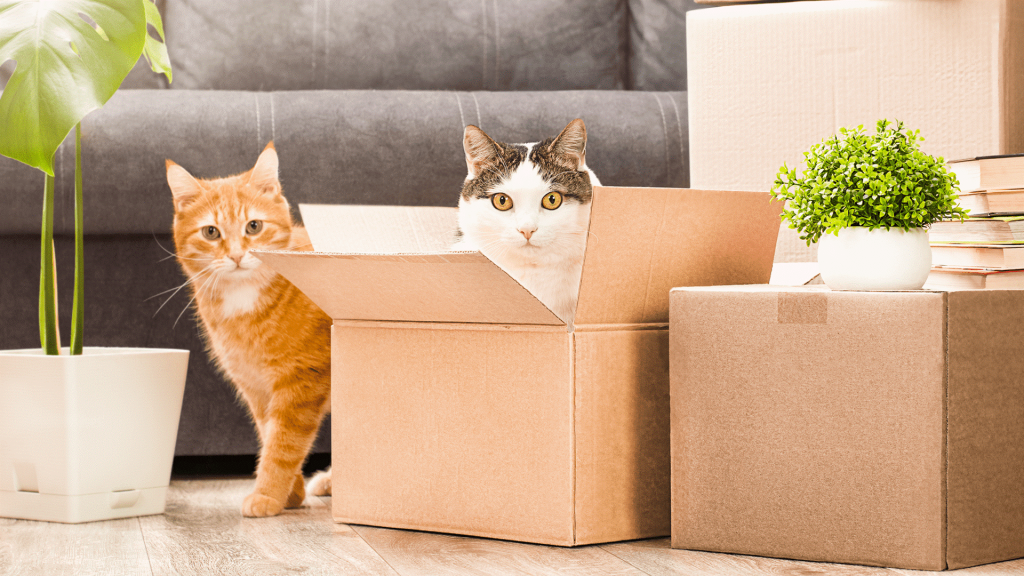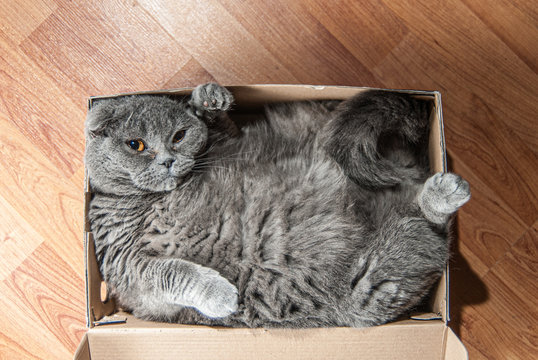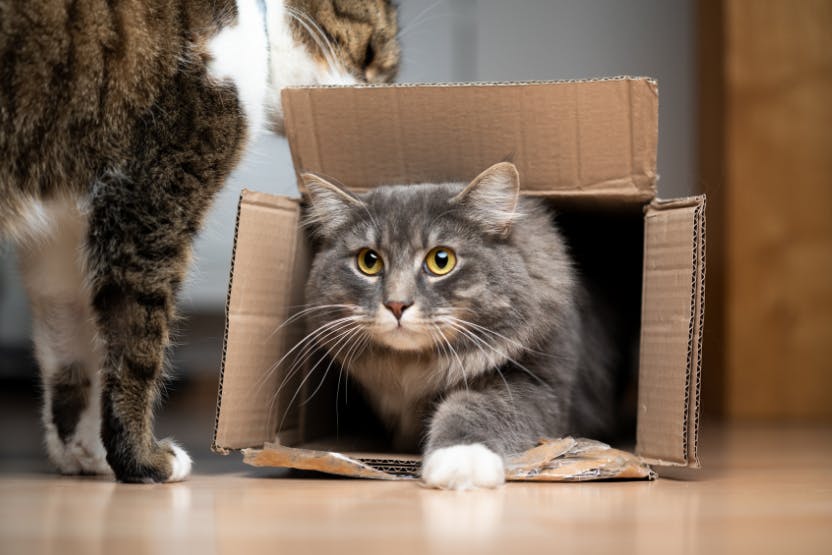Why Do Cats Love Boxes and Enclosed Spaces?
If you’ve ever left an empty cardboard box lying around your home, chances are your cat claimed it within seconds. From shoeboxes to laundry baskets to suitcases and drawers, cats seem irresistibly drawn to any confined space. But why do cats love boxes and enclosed spaces so much?
In this article, we’ll explore the science and psychology behind this quirky feline behavior and reveal how boxes serve as more than just hiding spots. This insight not only helps us better understand our cats but also enhances their well-being. Whether you’re a seasoned cat owner or a new feline friend, learning the reasons behind this behavior will help you provide a more cat-friendly environment.
1. Boxes Offer a Sense of Security
Cats are both predators and prey in the wild. Although your house cat may seem like a confident hunter, their instincts still prioritize safety and self-preservation.
Enclosed spaces like boxes offer a sense of protection from potential threats. When inside a box, a cat can observe their surroundings while remaining hidden. Their back is covered, the walls shield their sides, and they have control over what comes into their line of sight.
This behavior is rooted in evolution. In the wild, felines often seek caves, bushes, or tree hollows for sleeping and protection. The box mimics these safe havens.
Keyword Focus: Safe spaces for cats, why cats hide in boxes, instinctual behavior in cats
2. Boxes Help Cats Manage Stress

Veterinary experts and animal behaviorists agree that enclosed spaces reduce stress in cats. A study published in the journal Applied Animal Behaviour Science revealed that shelter cats given hiding boxes adapted faster, exhibited lower stress levels, and were more inclined to interact with humans.
For a cat, a box becomes a coping mechanism in unfamiliar or overwhelming situations. Moving to a new home, loud noises, unfamiliar guests, or other pets can all cause anxiety. When cats have a safe, enclosed space to retreat to, they regain a sense of control and calmness.
If your cat is hiding more than usual, it could be a sign of stress or illness, and providing a box can offer comfort during their recovery.
Keyword Focus: Cats and anxiety, stress relief for cats, shelter behavior in cats
3. Boxes Provide Warmth
Cats love warmth. Their ideal ambient temperature is around 86–97°F (30–36°C), which is higher than what most human homes maintain.
A cardboard box provides thermal insulation, trapping body heat and creating a cozy, warm micro-environment. This is especially important for short-haired or elderly cats that may have trouble staying warm.
In essence, a box acts like a personal thermal nest, helping cats conserve energy and stay comfortable.
Keyword Focus: Do cats like warm spaces?, cat body temperature, how cats stay warm
4. Boxes Stimulate Play and Hunting Instincts
Boxes are not just resting spots — they’re also great stimulation tools for play and hunting behavior. Cats are ambush predators by nature. They enjoy stalking, hiding, and pouncing, and a box serves as the perfect cover for their stealthy “attacks.”
You might notice your cat peeking out from a box, wiggling their hindquarters, and leaping at toys or even your feet. This behavior mimics how they would hunt in the wild.
A box encourages exploration, problem-solving, and active play, which is crucial for keeping indoor cats mentally and physically healthy.
Keyword Focus: Cat play behavior, hunting instincts in domestic cats, why cats jump from boxes
5. Boxes Serve as Territory
Cats are territorial creatures. They feel more comfortable in environments where they can claim and mark spaces as their own. Boxes quickly become part of that territory.
Cats may rub their cheeks on the box’s edge or knead the interior with their paws. These actions release pheromones — scent markers — that tell them, “This is mine.”
This behavior enhances their sense of security and control over their surroundings. Providing boxes or other designated resting areas helps reduce conflict between multiple cats in the same household.
Keyword Focus: Cat territorial behavior, how cats mark territory, multiple cats and box behavior
6. Enclosed Spaces Reduce Sensory Overload
In a busy household, sensory input can be overwhelming for cats. Loud noises, sudden movements, children, or other pets can contribute to sensory fatigue.
Enclosed spaces like boxes help reduce external stimuli, acting like sensory buffers. Inside a box, your cat can limit light, sound, and movement, allowing them to rest without being on high alert.
This behavior is especially common in skittish or older cats who prefer quiet, dark spaces for napping.
Keyword Focus: Cat sensory sensitivity, why cats seek quiet places, boxes and noise reduction for cats
7. Not Just Boxes: Any Enclosed Space Will Do
Although cardboard boxes are classic favorites, cats aren’t picky. They’ll happily crawl into:
-
Laundry baskets
-
Suitcases
-
Paper bags (without handles)
-
Drawers
-
Closets
-
Under the bed or couch
What matters most is enclosure and concealment. This universal behavior highlights that it’s not the material of the box that matters, but the feeling of shelter and security it provides.
So, if you don’t have a spare box, a small covered bed or a cat tent can also do the trick.
Keyword Focus: Alternatives to boxes for cats, enclosed spaces cats love, safe cat furniture
8. The Internet Made It Famous — But It’s Nothing New

You’ve likely seen countless viral videos of cats jumping into boxes, squeezing into tiny containers, or curling up in the most unexpected places. While the internet amplified this behavior, it’s by no means new.
This fascination with boxes has been observed across all domestic cats and even large wild cats like tigers and lions in captivity. It’s a species-wide instinctual behavior, not just a meme trend.
In fact, zoos often provide cardboard boxes and barrels as enrichment tools for big cats, confirming that the love for enclosed spaces is deeply ingrained.
Keyword Focus: Why cats on the internet love boxes, enrichment tools for big cats, natural feline behavior
9. Boxes Can Aid in Cat Introductions and Socialization
If you’re introducing a new cat to your household, placing boxes in the shared environment can ease the transition. Boxes give both cats a place to hide and feel safe, reducing the chances of territorial conflict or aggression.
They also offer a neutral zone for gradual scent exchange and observation. By minimizing direct confrontation, boxes act as social buffers during the acclimation process.
Keyword Focus: Introducing new cats, cat behavior during socialization, tips for multi-cat households
10. How to Choose the Right Box for Your Cat
If you want to enhance your cat’s happiness with the perfect box, consider the following:
-
Size: The box should be large enough for your cat to sit or lie down comfortably, but small enough to feel snug.
-
Material: Cardboard is great for warmth and scratching. Avoid boxes with staples or sharp edges.
-
Location: Place the box in a quiet, low-traffic area.
-
Extras: Line the box with a soft towel or blanket for added comfort. Try sprinkling a bit of catnip to make it even more inviting.
You can also rotate boxes occasionally to maintain your cat’s interest.
Final Thoughts
So, why do cats like boxes and enclosed spaces? The answer lies in their natural instincts, psychological needs, and desire for comfort. Boxes provide security, warmth, entertainment, and a way to cope with stress — all wrapped up in a simple cardboard structure.
Understanding this behavior helps us create more enriching environments for our feline companions. So next time you receive a package, don’t throw away the box. Instead, gift it to your cat — it’s the simplest way to show you care.
Read more:
- Do Pets Have Memory? What They Remember and For How Long
- Essential Measures to Prevent Keratitis in Cats

